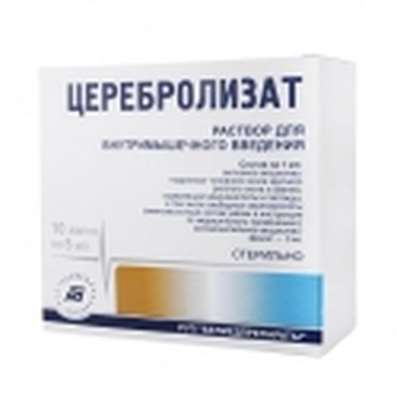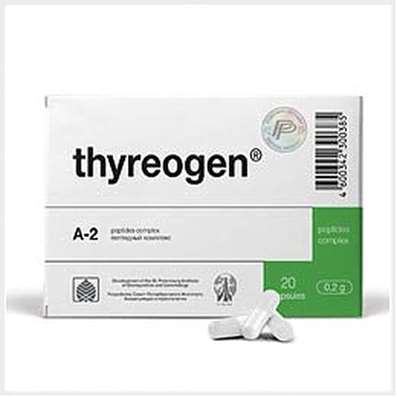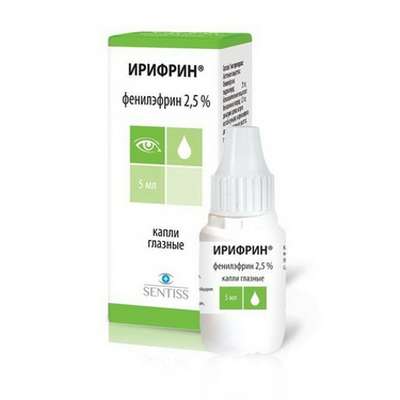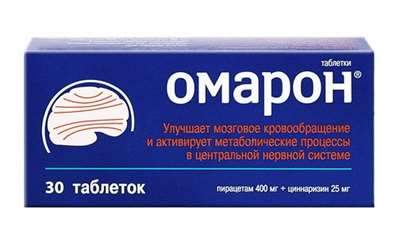Instruction for use: Tisercin
I want this, give me price
Dosage form: tablets
Active substance: Levomepromazine*
ATX
N05AA02 Levemepromazine
Pharmacological group:
Neuroleptics
The nosological classification (ICD-10)
F20 Schizophrenia: Schizophrenic conditions; Exacerbation of schizophrenia; Schizophrenia; Chronic schizophrenia; Dementia praecox; Bleuler's disease; Psychotic discordant; Dementia early; The febrile form of schizophrenia; Chronic schizophrenic disorder; Psychosis of the schizophrenic type; Acute form of schizophrenia; Acute schizophrenic disorder; Cerebral Organic Insufficiency in Schizophrenia; Acute attack of schizophrenia; Schizophrenic psychosis; Acute schizophrenia; Sluggish schizophrenia; Sluggish schizophrenia with apathoabulic disorders; Acute stage of schizophrenia with excitation
F28 Other Inorganic Psychotic Disorders: Affective psychoses; Involutional psychosis; Psychoinstrumental; Psycho senile; Senile psychosis; An old-time involutionary psychosis; Static psychosis
F29 Inorganic psychosis, unspecified: Childhood psychoses; Psychomotor agitation in psychoses; Hallucinatory-delusional disorders; Hallucinatory-delusional syndrome; Intoxication psychosis; Manic-delusional disorders; Manic chronic psychosis; Manic psychosis; Acute psychosis; paranoid psychosis; Paranoid psychosis; Subacute psychosis; Presenile psychosis; Psychosis; Intoxicating psychosis; Psychosis is paranoid; Psychosis in children; Reactive psychosis; Chronic psychosis; Chronic hallucinatory psychosis; Chronic psychosis; Chronic psychotic disorder; Schizophrenic psychosis
F31 Bipolar affective disorder: Mood disorders bipolar; Affective bipolar psychosis; Manic-melancholic psychosis; Intermittent psychosis; Circular psychosis; Cyclophrenia; Bipolar disorders; Bipolar psychosis; Affective insanity; Manic-depressive syndrome; Psycho Manic-Depressive; Depressive episode of bipolar disorder
F40.9 Phobic anxiety disorder, unspecified:Obsessive fear; Anxiety neurosis; Neurosis of anxiety; Acute anxiety disorder; Syndrome of paroxysmal fear; State of fear; Phobias; Phobic disorders; Feeling of fear
F41.0 Panic disorder [episodic paroxysmal anxiety]: Panic state; Panic attack; Panic; Panic disorder
F41.9 Anxiety disorder, unspecified: Neurotic disorders with anxiety syndrome; Severe anxiety; Neuro-like symptomatology; Neuro-like disorders; Neuro-like conditions; Neuroses with anxiety symptoms; Neuroses with a sense of anxiety; Acute situational and stress anxiety; Acute attack of anxiety; Severe Anxiety; Situational Anxiety Disorder; State of anxiety; Anxious and delusional component; Alarming state; Anxiety; Anxiety Disorders; Anxiety syndrome; Sense of anxiety; Alarm conditions; Chronic neurotic anxiety; Susto; Psychopathy with a predominance of anxiety and anxiety; Anxiety disorders in neurotic and neurosis-like states; Anxious neuroses; Anxious and delusional state; Acute situational stress alarm; Depressed mood with elements of anxiety
F51.0 Insomnia of inorganic etiology: Situational insomnia; Situational sleep disorders
F79 Mental retardation, unspecified: Mental retardation; Infantilism mental; Violation of mental activity; Oligophrenia; Lag behind mental development; Delayed development of intellectual abilities in children and adolescents; Slowed mental development in children; Maloumia; Oligopsihia; Mental failure; Impaired mental function; Mental retardation; Lack of intellectual development in children; Lack of mental development in children; Mental retardation; Lack of mental development in children; Mental retardation
F99 Unspecified mental disorders: Child psychosis; Mental disturbance; Violation of mental activity; Psychoses of childhood
G47.0 Disorders of falling asleep and maintaining sleep [insomnia]: Insomnia; Insomnia, especially difficulty falling asleep; desynchronosis; Prolonged sleep disturbance; Difficulty falling asleep; Short-term and transient insomnia; Short-term and chronic sleep disorders; Short or shallow sleep; Violation of sleep; Disturbed sleep, especially in the phase of falling asleep; Infringements sleep; sleep disturbances; Neurotic sleep disturbance; Shallow superficial sleep; shallow sleep; Poor quality of sleep; Night awakening; sleep Pathology; Postsomnic violation; transient insomnia; Trouble falling asleep; Early awakening; Early morning awakening; Early awakening; sleep disorder; somnipathy; persistent insomnia; difficult to fall asleep; difficulty falling asleep; Difficulty falling asleep in children; persistent insomnia; Worsening sleep; Chronic insomnia; Frequent night and / or early morning awakening; Frequent nocturnal awakening and a sense of the depth of the non-sleep; Night waking
G50.0 Trigeminal neuralgia: trigeminal neuritis; Painful tic; Idiopathic neuralgia of the trigeminal nerve; Neuralgia of the trigeminal nerve; Essential neuralgia of the trigeminal nerve; Pain syndrome in trigeminal neuralgia; Painful tic; Trigeminal neuralgia; Neuralgia of the trigeminal nerve
G51 Lesions of the facial nerve: Neuralgia of the facial nerve; Neuritis of the facial nerve; Paralysis of the facial nerve; Pain syndrome with neuritis of the facial nerve; Peripheral paralysis of the facial nerve; Paresis of the facial nerve
R45.1 Anxiety and agitation: Agitation; Anxiety; Explosive excitability; Internal stimulation; Excitability; Excitation; Excitation acute; Psychomotor agitation; Hyperexcitability; Motor excitement; Cessation of psychomotor agitation; Nervous excitement; Restlessness; Night trouble; Acute stage of schizophrenia with excitation; Acute mental agitation; Paroxysm of excitation; Overexcitation; Increased excitability; Increased nervous excitability; Increased emotional and cardiac excitability; Increased agitation; Mental arousal; Psychomotor agitation; Psychomotor agitation in psychoses; Psychomotor agitation of an epileptic nature; Psychomotor paroxysm; Psychomotor fit; Symptoms of Excitation; Symptoms of psychomotor agitation; The state of agitation; A state of anxiety; Excitation status; A state of heightened concern; The state of psychomotor agitation; Conditions of anxiety; Excitation conditions; The state of excitement in somatic diseases; Excitation level; Feelings of anxiety; Emotional arousal
R52.9 Unspecified pain: Pain after cholecystectomy; Pain shooting; Non-malignant pain syndrome; Obstetric and gynecological pain; Pain syndrome; Pain syndrome in the postoperative period; Pain syndrome in the postoperative period after orthopedic operations; Painful syndrome of inflammatory genesis; Pain syndrome of non-oncological genesis; Pain syndrome after diagnostic procedures; Pain syndrome after the diagnostic intervention; Pain syndrome after operations; Pain syndrome after surgery; Pain syndrome after orthopedic surgery; Pain syndrome after trauma; Pain syndrome after removal of hemorrhoids; Pain syndrome after surgery; Pain syndrome with inflammation of non-rheumatic nature; Pain syndrome with inflammatory lesions of the peripheral nervous system; Pain syndrome in diabetic neuropathy; Pain syndrome in acute inflammatory diseases of the musculoskeletal system; Pain syndrome in the pathology of tendons; Pain syndrome with smooth muscle spasms; Pain syndrome with smooth muscle spasms (renal and biliary colic, intestinal spasm, dysmenorrhea); Pain syndrome with spasms of smooth muscles of internal organs; Pain syndrome with spasms of smooth muscles of internal organs (renal and biliary colic, intestinal spasm, dysmenorrhea); Pain syndrome with injuries; Pain syndrome with injuries and after surgery; Pain syndrome in chronic inflammatory diseases of the musculoskeletal system; Pain syndrome with duodenal ulcer; Pain syndrome with gastric ulcer; Pain syndrome with peptic ulcer of stomach and duodenum; Painful sensations; Pain during menstruation; Pain syndromes; Painful conditions; Painful leg fatigue; Gum pain when wearing dentures; The pain of exit points of cranial nerves; Painful irregular menstruation; Painful dressings; Painful muscular spasm; Painful growth of teeth; Pain in lower limbs; Pain in the area of the operating wound; Pain in the postoperative period; Pain in the body; Pain after diagnostic interventions; Pain after orthopedic surgery; Pain after surgery; Pain in the flu; Pain in diabetic polyneuropathy; Pain in burns; Pain in intercourse; Pain during diagnostic procedures; Pain during therapeutic procedures; Pain for colds; Pain with sinusitis; Pain in case of injury; Pain of a traumatic nature; Pain in the postoperative period; Pain after Diagnostic Interventions; Pain after sclerosing therapy; Pain after surgery; Postoperative pain; Postoperative and post-traumatic pain; Post-traumatic pain; Pain when swallowing; Pain in infectious and inflammatory diseases of the upper respiratory tract; Pain with burns; Pain with traumatic muscle damage; Pain in case of injury; Pain when extracting a tooth; Pain of traumatic origin; Pain caused by spasm of smooth muscles; Severe pain syndrome; Severe pain syndrome of traumatic origin; Postoperative pain; Postoperative pain syndrome; Post-traumatic pain; Post-traumatic pain syndrome; Torpid pain syndrome; Traumatic pains; Moderate pain; Moderately expressed pain syndrome; Moderate pain syndrome; Polyartralgia in polymyositis
Z100.0 * Anaesthesiology and premedication: Nasogastric intubation; Relaxation of skeletal musculature; Managed breathing in anesthesia; Anesthesia; Anesthesia in otorhinolaryngology practice; Anesthesia in dentistry; Arterial hypotension with spinal anesthesia; Ataralgesia; Basic anesthesia; Rapid anesthesia; Introduction to anesthesia; Induction Anesthesia; Inhalation anesthesia; Inhalation anesthesia for large and small surgical interventions; Induction and maintenance of general anesthesia; Intraligamentary anesthesia; Intubation of the trachea; Caudal anesthesia; Caudal blockade; Combined anesthesia; Short-term anesthesia; Short-term infiltration anesthesia in surgery; Short-term local anesthesia; Lumbar anesthesia; Local anesthesia; Local infiltration anesthesia; Local superficial anesthesia; Monocomponent anesthesia; anesthesia; Non-anional anesthesia in operative delivery; Immediate Anesthesia; General anesthesia; General anesthesia for short-term surgical interventions; General Anesthesia; Premedication period; Surface anesthesia in ophthalmology; Maintaining anesthesia; Premedication; Conduction Anesthesia; Regional anesthesia; Mixed anesthesia; Spinal anesthesia; Spinal-cerebral anesthesia; Terminal anesthesia; Epidural anesthesia; IVL; Artificial Hibernation; Short-term muscle relaxation; Muscle relaxation; Muscle relaxation during mechanical ventilation; Miorelaxation in surgical interventions; Muscle relaxation at operations; Muscle relaxation in ventilating; Excitation before surgery; Cardioplegia; Preoperative period
Composition
Tablets, coated with a coating.
active substance:
levomepromazine 25 mg
(equivalent to 33.8 mg of levomepromazine hydro-maleate)
auxiliary substances: magnesium stearate - 1 mg; sodium starch glycolate - 2 mg; povidone - 8 mg; MCC - 10 mg; potato starch - 15.2 mg; lactose - 40 mg
shell: hypromellose - 2,632 mg; titanium dioxide - 0.758 mg; Dimethicone - 0.355 mg; magnesium stearate 0.255 mg
Solution for infusion and intramuscular injection 1 amp.
active substance:
levomepromazine 25 mg
auxiliary substances: citric acid anhydrous - 9 mg; monothioglycerol - 7.5 mg; sodium chloride - 6 mg; water for injection - up to 1 ml
Pharmachologic effect
The pharmacological action is neuroleptic.
Dosing and Administration
Tablets
Inside, starting with a daily dose of 25-50 mg, in several ways (the maximum part of the daily dose should be prescribed before bedtime), increasing it daily by 25-50 mg until the patient's condition improves. In patients resistant to other neuroleptics, the daily dose can be increased faster, adding 50-75 mg / day. The average daily doses are 200-300 mg.
After the patient's condition is improved, the dose should be reduced to a maintenance dose, the value of which is determined individually.
In outpatient practice, patients with neurotic disorders are prescribed in a daily dose of 12.5-50 mg (1 / 2-2 table).
Patients with psychoses, with expressed psychomotor agitation, it is advisable to begin therapy with levomepromazine from parenteral administration.
Conditions of leave from pharmacies
On prescription.
Storage conditions of the drug Tisercin
In the dark place at a temperature of no higher than 25 ° C.
Keep out of the reach of children.
Shelf life of the drug Tisercin
solution for infusion and intramuscular injection of 25 mg / ml - 2 years.
tablets coated with 25 mg - 5 years.
Do not use after the expiry date printed on the package.

 Cart
Cart





